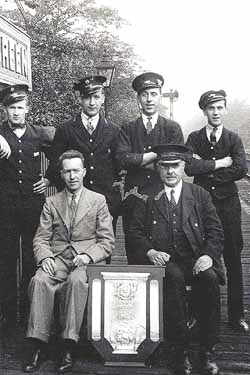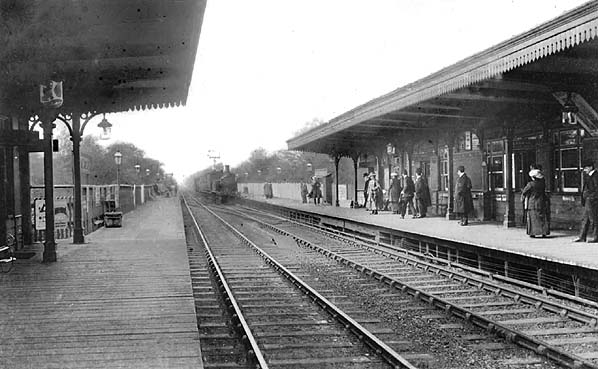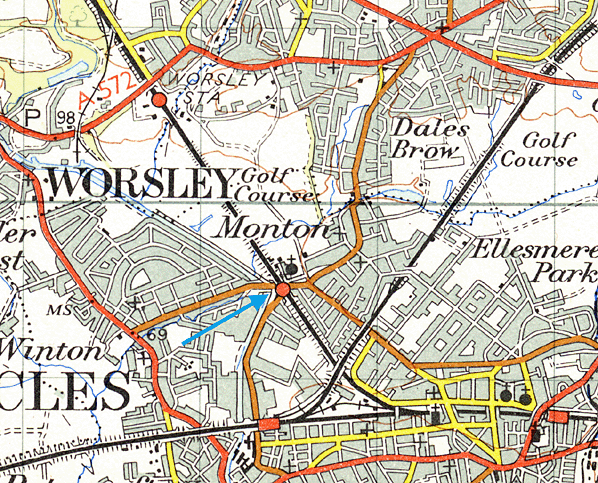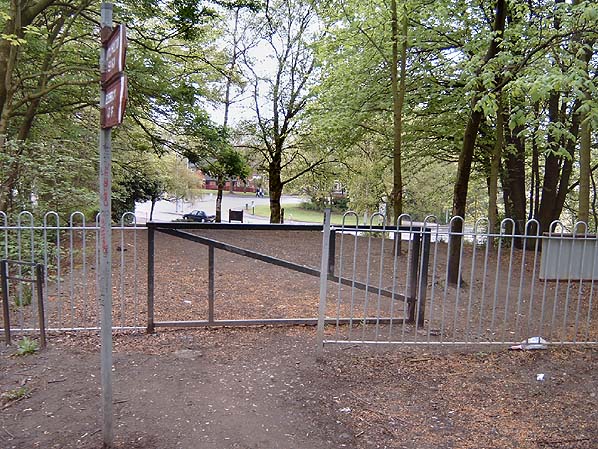|
Notes: The Tyldesley Loopline was opened by the London &v
North West Railway Company on 1st September 1864, to provide
a link between Eccles (located on the famous 1830 Stephenson
line between Manchester and Liverpool), and Wigan (located
on the main West Coast line which ran from London to Glasgow).
In 1870 an additional branch line (the Roe Green Loopline)
was opened to Bolton, via Walkden Low Level. A key function
of the lines was to support the surrounding collieries in
conjunction with the Bridgewater canal, the largest of which
was at Mosley Common, one of the biggest pits in the UK at
its prime.
 Monton Green station staff in 1930 after (click) winning an award. Photo from Peter Higson
Monton Green station staff in 1930 after (click) winning an award. Photo from Peter Higson
|
The Tyldesley Loopline extended from Eccles, through Monton
and Worsley to Roe Green, where it turned westwards through
Ellenbrook. At Roe Green, the Roe Green Loopline diverted
northwards through Walkden to Bolton.
Roe Green itself was the scene of a major rail crash in on
11th February 1926, when several wagons and a brake van broke
loose from an engine at Little Hulton, thence proceeded down
the gradient through Walkden into the vicinity of Roe Green.
Here, an emergency plan was hastily put into operation and
the carriages were diverted into a small siding adjacent to
Beesley Bridge. They smacked into the bridge, breaking up
in the process and depositing their contents far and wide,
before bursting into flames. The contents of one wagon being
boxes of Daddies Sauce, and the other crates of Wellington
boots.
Stations on the Tyldesley Loopline were located at Monton
Green, Worsley, Tyldesley and Leigh. Typical |
traffic included
transportation of coal, machinery from David Browns in Leigh
and seasonal specials to Blackpool.
Stations on the Tyldesley Loopline were located at Monton
Green, Worsley, Tyldesley and Leigh. Typical traffic included
transportation of coal, machinery from David Browns in Leigh
and seasonal specials to Blackpool.
Monton Green station was opened in November 1887, mainly
to cater for suburban commuters into Manchester and was located
alongside the entrance to Worsley Golf Club.
Six cottages were demolished to make way for Worsley Station.
The quality of the building reflected the important status
the village had achieved, due primarily to its links with
the Bridgewater estate. The cutting of the first soil prior
to building the station was performed in 1861 by the second
Earl of Ellesmere.
The lines were managed by several companies before their
closure in the late 1960s. The Tyldesley Loopline was finally
closed under the 'Beeching Axe' on 5th May 1969, when under
the control of British Rail. The Roe Green branch line closed
in October 1969.
Mosley Common colliery employed over 2,000 by 1919, and became
part of the Manchester Collieries company in 1929, before
the take over by the National Coal Board in 1947. By the late
1950's, the colliery employed 3,000, and was among the largest
and most modern pits in the country. However it was closed
in 1968 without having been exhausted, and the site was cleared
by 1974.
The last ever passenger train to use the Tyldesley Loopline
left Monton Green at 10:48am on 5.5.1969, bound for Liverpool.
Since the 1980's parts of the line has been progressively
reclaimed and now forms an integral part of the Salford network
of recreation
pathways. More recently, the Greater Manchester Passenger
Transport Authority has promoted the concept of reclaiming
some 7km of the old line as a bus corridor.
See also Worsley
Station
|




 Home
Page
Home
Page




